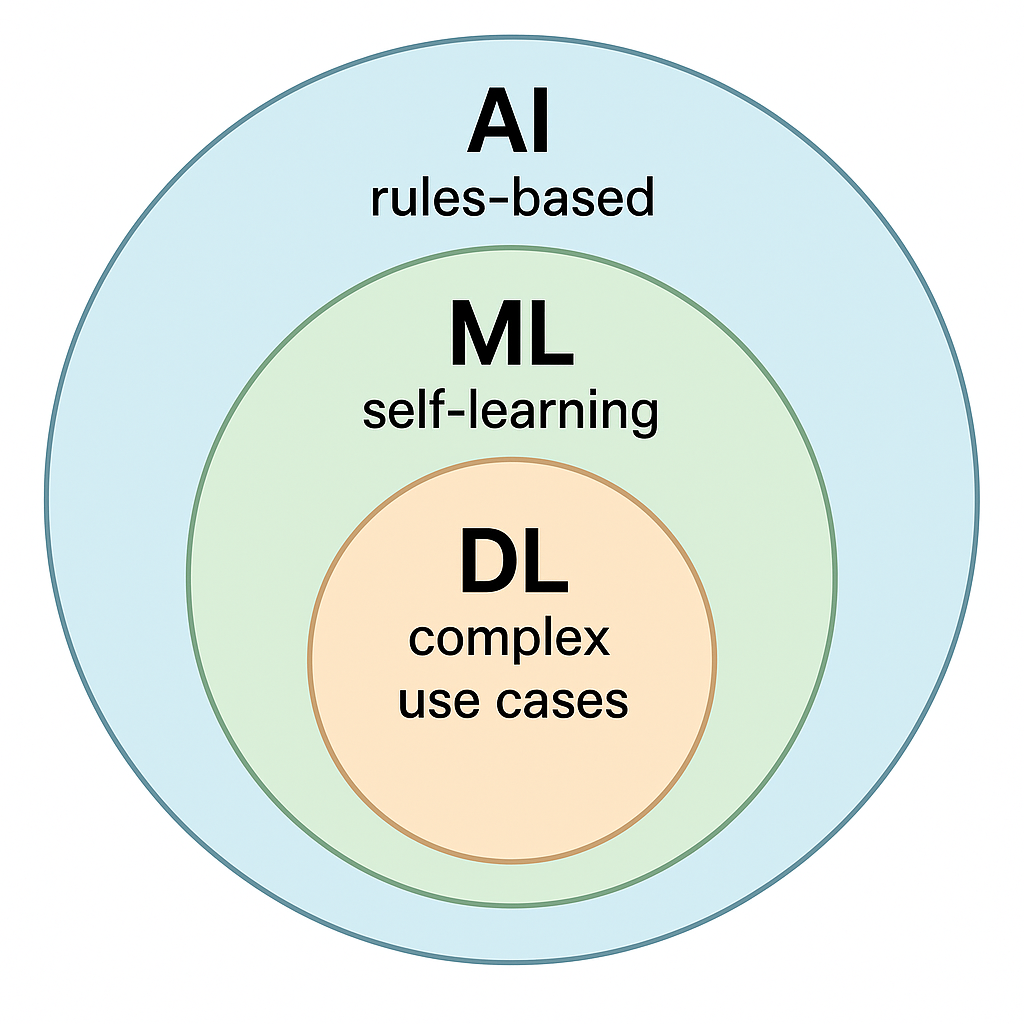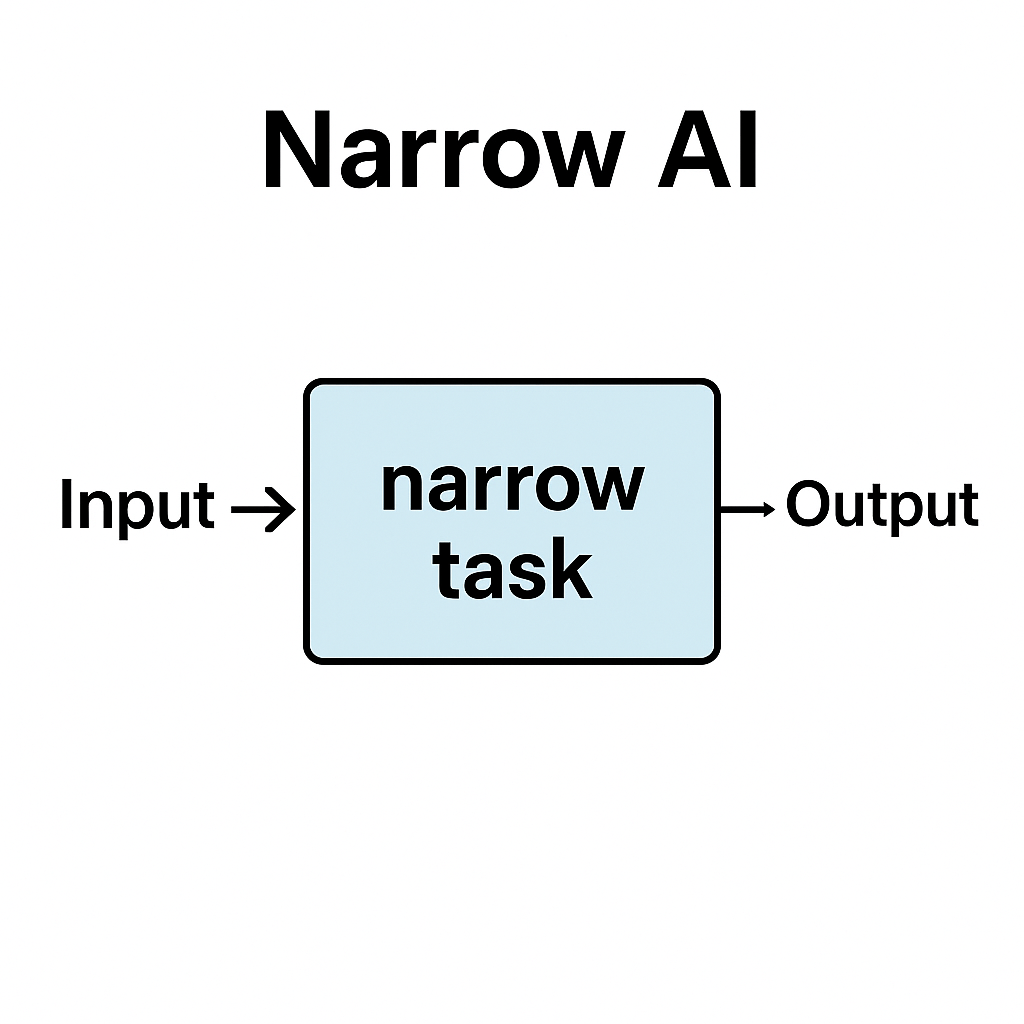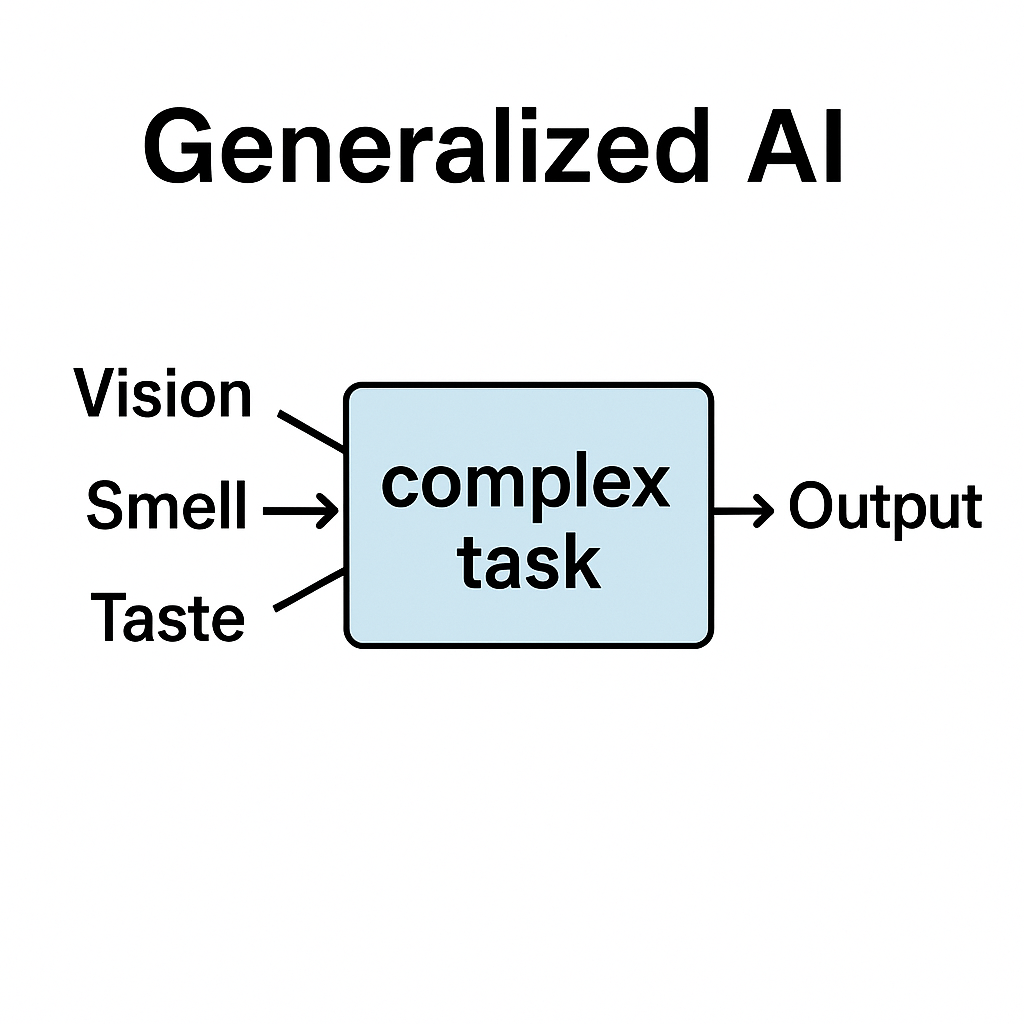Quick Summary
Artificial Intelligence (AI) is about making computers think and act like humans. It includes Machine Learning (ML), where computers learn from data, and Deep Learning (DL), a more advanced type of ML. AI is used everywhere, from recommending movies to helping doctors diagnose diseases. It’s important because it can solve problems, improve our lives, and create new opportunities.
Detailed Explaination
Artificial Intelligence (AI) is a broad field of computer science that focuses on creating machines capable of performing tasks that typically require human intelligence. These tasks include learning, problem-solving, decision-making, and perception. In essence, AI aims to make computers “think” and act like humans.
Key Concepts
To understand AI, it’s helpful to distinguish it from related concepts:
- Artificial Intelligence (AI): The overarching concept of creating intelligent machines.
- Machine Learning (ML): A subset of AI that involves training machines to learn from data without being explicitly programmed. Instead of hard-coding rules, ML algorithms identify patterns and make predictions based on the data they are trained on.
- Deep Learning (DL): A subset of machine learning that uses artificial neural networks with multiple layers (hence “deep”) to analyze data. Deep learning is particularly effective for complex tasks like image recognition and natural language processing.
Think of it like this: AI is the big circle, ML is a smaller circle inside AI, and DL is an even smaller circle inside ML.

A Brief History
Suprisingly, the idea of AI has been around for centuries, but the field really took off in the mid-20th century. Some key milestones include:
- 1950: Alan Turing publishes “Computing Machinery and Intelligence,” which proposes the Turing Test as a way to measure a machine’s ability to exhibit intelligent behavior.
- 1956: The Dartmouth Workshop, considered the birthplace of AI, brings together researchers to discuss the possibilities of creating thinking machines.
- 1960s-1970s: Early AI programs are developed, such as ELIZA (a natural language processing program) and SHRDLU (a program that could understand and manipulate objects in a virtual world).
- 1980s: Expert systems, which are designed to mimic the decision-making abilities of human experts, become popular.
- 2000s-Present: The rise of machine learning and deep learning, fueled by the availability of large datasets and increased computing power, leads to breakthroughs in areas like image recognition, natural language processing, and robotics.
Types of AI
AI can be categorized into different types based on its capabilities:
- Narrow or Weak AI: AI that is designed to perform a specific task. Most AI systems today fall into this category. Examples include spam filters, recommendation systems, and voice assistants like Siri and Alexa.
- General or Strong AI: AI that has the ability to understand, learn, and apply knowledge across a wide range of tasks, much like a human. General AI does not yet exist.
- Super AI: AI that surpasses human intelligence in all aspects. Super AI is currently hypothetical.
Below is a visual representatio of Narrow or Weak AI, this is where most cases of AI exist, but this is quickly evolving

Generalized AI doesn’t yet exist, but it’s coming!

Why is AI Taking Off Now
AI has been a dream for decades, but only recently has it become a practical and powerful tool in our daily lives. There are three main reasons for this surge in AI’s capabilities and popularity.
First, data is everywhere, and AI feeds off data. Every time we use our phones, shop online, stream music, or even walk past a security camera, data is being generated. This explosion of digital information—photos, videos, text, sensor readings, and more—provides the raw material that AI systems need to learn and improve. The more data available, the better AI can recognize patterns, make predictions, and offer useful insights.
Second, machine learning is finding patterns everywhere. Machine learning, a core part of AI, is all about teaching computers to spot trends and relationships in huge datasets. Whether it’s recommending a movie you might like, detecting fraudulent credit card transactions, or helping doctors diagnose diseases, machine learning algorithms are constantly uncovering hidden patterns that would be impossible for humans to find on their own. This ability to learn from data and adapt to new information is what makes modern AI so powerful.
Third, our hardware has evolved to support the vast processing power required for AI. In the past, computers simply weren’t fast or powerful enough to handle the complex calculations needed for advanced AI. Today, thanks to massive improvements in CPUs (central processing units) and especially GPUs (graphics processing units), we can process enormous amounts of data quickly and efficiently. GPUs, originally designed for video games, are now essential for training deep learning models because they can perform many calculations in parallel. This leap in hardware capability has unlocked new possibilities for AI research and applications.
In summary, the combination of abundant data, smarter algorithms, and powerful hardware has created the perfect environment for AI to thrive right now. This is why we’re seeing AI transform industries and become a part of everyday life.
Applications of AI
AI is already transforming many industries and aspects of our lives. Some examples include:
- Healthcare: AI is used for diagnosing diseases, developing new treatments, and personalizing patient care.
- Finance: AI is used for fraud detection, algorithmic trading, and risk management.
- Transportation: AI is used in self-driving cars, traffic management systems, and logistics optimization.
- Retail: AI is used for personalized recommendations, chatbots, and supply chain management.
- Entertainment: AI is used for creating personalized content, generating music, and developing video games.
Why is AI Important?
AI has the potential to solve some of the world’s most pressing problems, improve our quality of life, and drive economic growth. By automating tasks, analyzing data, and making predictions, AI can help us make better decisions, work more efficiently, and create new opportunities.
What’s Next?
In our next section we will be covering off Developer Frameworks for AI
